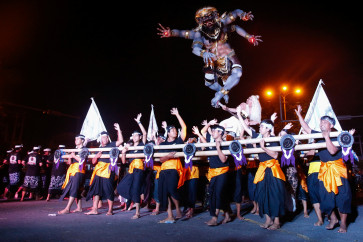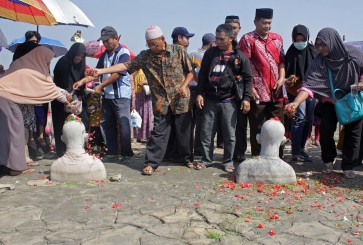Sarongs are 2023's must-have fashion item
These days, many people proudly wear sarongs in their daily lives.
Change text size
Gift Premium Articles
to Anyone
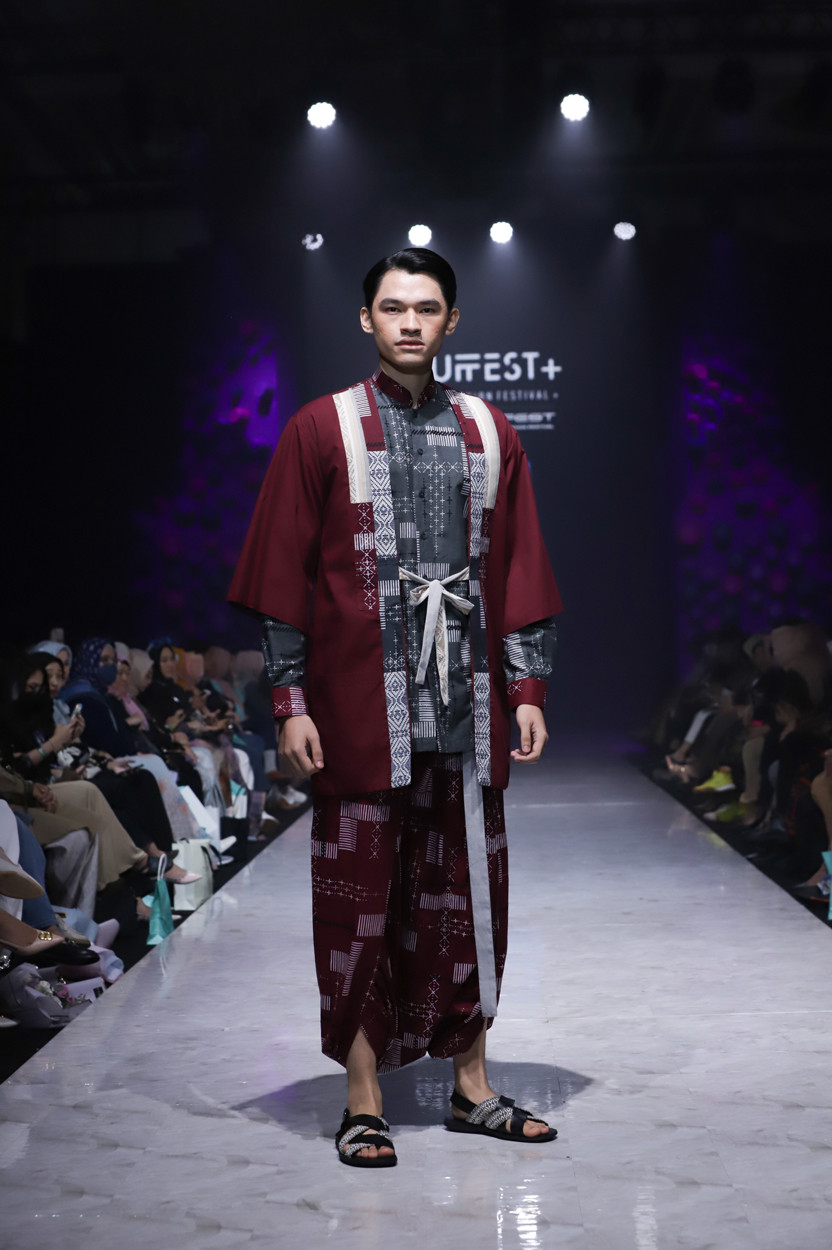
Sarongs are no longer confined to religious and traditional circles. These days, many people proudly wear them in their daily lives.
The sarong is a favorite fashion item during Lebaran. But its use has transcended religious and traditional circles. Today, many men and women proudly wear it to the office, malls and even when riding big bikes.
Ignatius “Bingky” Hendra is an example. The architect-turned-big-bike-enthusiast wears sarongs almost everywhere, also when working in his repair shop and touring the cities on one of his cruisers.
“I started wearing sarongs almost daily six or seven years ago,” Bingky said in a Zoom session on Feb. 25. “And I love it. I never feel that [wearing sarongs] hampers any of my movements or daily activities.”
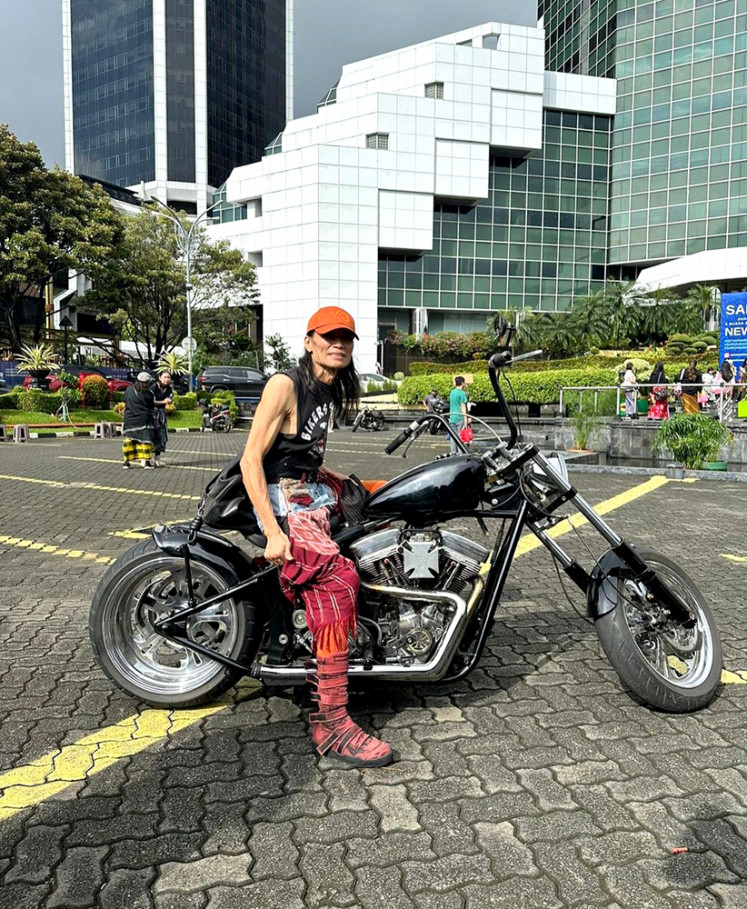
Brand activist Arto Biantoro is another example. The 49-year-old has been wearing sarongs daily for the past five years.
Arto wears them with a simple T-shirt and sandals when hanging out with friends. He combines them with a crisp shirt, formal jacket, and patent leather shoes during formal occasions.
“For me, wearing sarongs is beyond looking cool,” Arto said. “[Wearing sarongs] is a symbol of local wisdom and a representation of my love for my country.”
Independence from Western influences
Both in their tubular and long forms, Sarongs are prevalent in many different countries in Asia and Africa. The clothing item is mainly used to cover the lower half of the body, although sometimes people also wear them as an outer garment or a blanket to cover the torso when the weather turns cool.
In Indonesia, sarongs were also instrumental in the country’s fight for independence.
“During the colonial era, there was a movement among the santri [Islamic scholars] and nationalists to wear sarongs as a symbol of independence from Western influences,” Dina Midiani, trend expert and fashion designer of the Indonesian Fashion Chamber (IFC), said.
During this era, religious leaders, such as Hasyim Asy’ari (1871-1947) and Abdul Wahab Hasbullah (1888-1971), were often seen in a sarong, white shirt and Javanese beskap (traditional jacket) at various formal events to show their stance against colonialism.
But shortly after Indonesia’s independence, many nationalists abandoned sarongs for modern fashion styles by following the country’s first president Soekarno, who adopted Western suits as his official attire.
“At that time, Soekarno said that Indonesians, having been free from colonial oppression, would love to see their leader well-dressed in [Western] suits,” Dina explained.
Since then, sarongs have mostly been confined within Indonesia’s traditional and religious circles.
“The number of sarong artisans has greatly declined since then,” fashion designer Samuel Wattimena said.
“As fewer people buy sarongs, many of [the artisans] have changed jobs to working in shops or malls where they can get more money while meeting people rather than working solitarily at home weaving for many hours for just a few centimeters of sarongs,” Samuel added.
Becoming the new “denim”
Seeing this dire situation, the Indonesian Fashion Chamber (IFC) started a campaign to promote sarongs in 2017.
“We started with a movement called ‘Sarong is my new denim’ to popularize sarongs as daily wear,” said Dina Midiani, IFC trend expert.
In this movement, IFC presented a series of events, including sarong fashion shows, talk shows and styling demos.
“Many young people became interested and started wearing sarongs on formal and informal occasions,” Dina said.
“President [Joko] Jokowi [Widodo] has also set an example by wearing a sarong paired with a shirt and formal jacket at various events,” she added.
In 2019, President Jokowi established Mar. 3 as Indonesia’s national sarong day.
Wearing sarongs in style
Several key members of the IFC, including Dina Midiani, have committed to wearing Indonesian sarongs daily. They also actively introduce easy and creative ways to wear traditional fashion items at various fashion events and on social media.
“When people see that sarongs can look cool, they will also want to wear them,” Dina said. “This, in turn, will boost the sales of traditional Indonesian fabrics.”
Many tourists visiting Indonesia love to buy Indonesian sarongs and traditional hand-woven fabrics as souvenirs.
“But then, many of them don’t know what to do with the [traditional Indonesian fabrics] as it is expensive to hire a tailor to make them into modern clothing items,” Dina said. “So, they just put them on the wall as a decoration or use them as a tablecloth.”
“Hopefully, when they see that they can fashionably style and wear them daily, they will buy more,” Dina added.
Hot fashion trend
Fashion designer Rosie Rahmadi has recently adopted sarongs into her daily fashion styles.
“At first, I thought that wearing sarongs was difficult and cumbersome,” Rosie said in a talk show during Muslim Fashion Festival 2023 (Muffest+ 2023) at The Westin Jakarta on Mar. 9. “But the more I experimented with [wearing sarongs], the more I discovered easy and practical ways to put them on.”
During the event, Rosie and her colleagues demonstrated some simple steps to wearing sarongs to the audience.
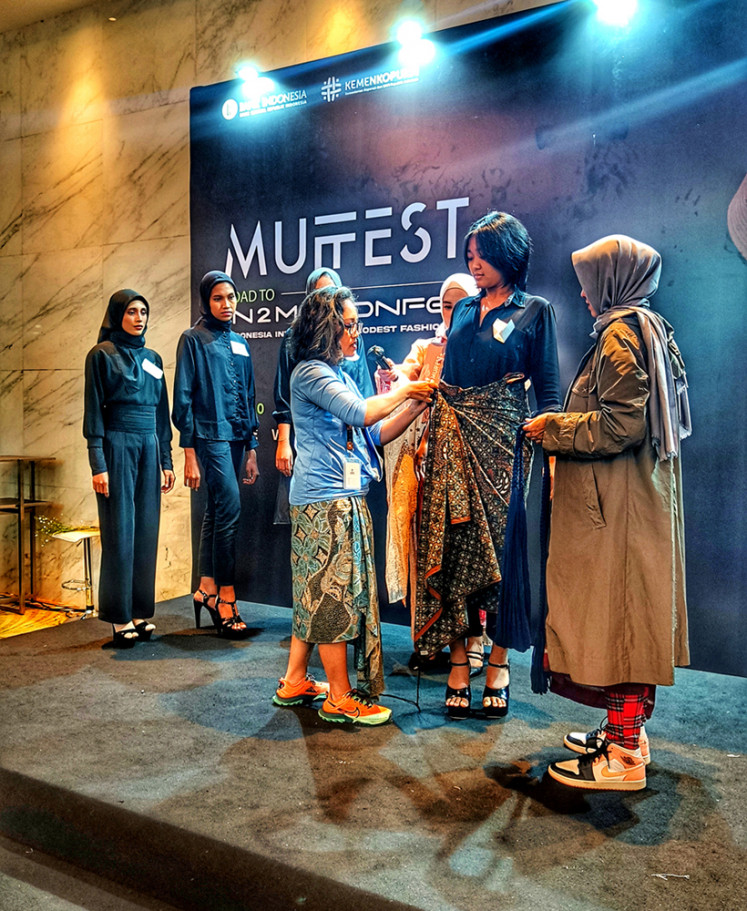
Tubular sarongs are, of course, the easiest to wear. You can fold them around your waist and roll the top down twice or three times.
The long-piece sarongs require more creativity and effort to wear.
One of the most practical ways is to hold one end of the long fabric above your waist in front of you and wrap the rest of the material around your body. Afterward, twist the other end into a neat conical shape and tie the upper ends together in a double knot.
Twisting the sarong’s upper front end also makes the fabric cascade beautifully down your waist, creating an amazing body-hugging silhouette.
“The nice thing about sarongs is that you don’t have to be very neat or precise in putting them on,” fashion designer Riri Rengganis said. “In fact, every crease and fold will create an aesthetic edge.”
For those with a plus body size, you might need to extend one of the sarong’s upper ends with an additional cotton strap to allow it to wrap around your body more comfortably.
You can then place an obi belt on your waist to disguise the knot and enhance your look.
“The pattern and color of the obi belt don’t necessarily match those of your sarong,” Riri said. “The more contrasting they are, the more interesting and stylish the look.”
The Bandung-based designer [Riri] often shares creative ways to style and wear sarongs on social media.
“I think it’s now the right moment to popularize sarongs,” Riri said. “Sarongs are chic, versatile and genderless, just like today’s hot fashion trends.”

